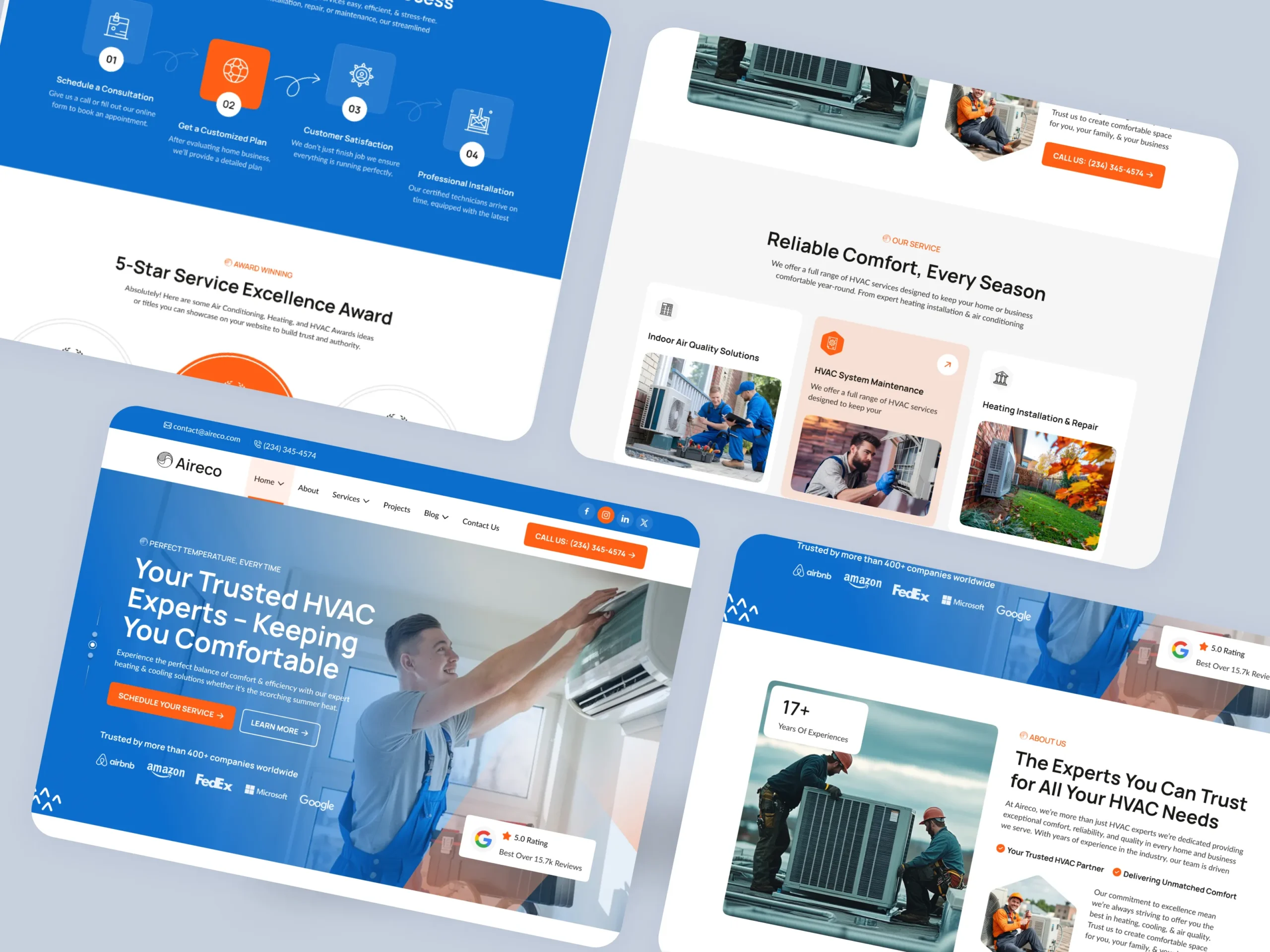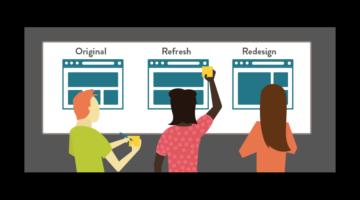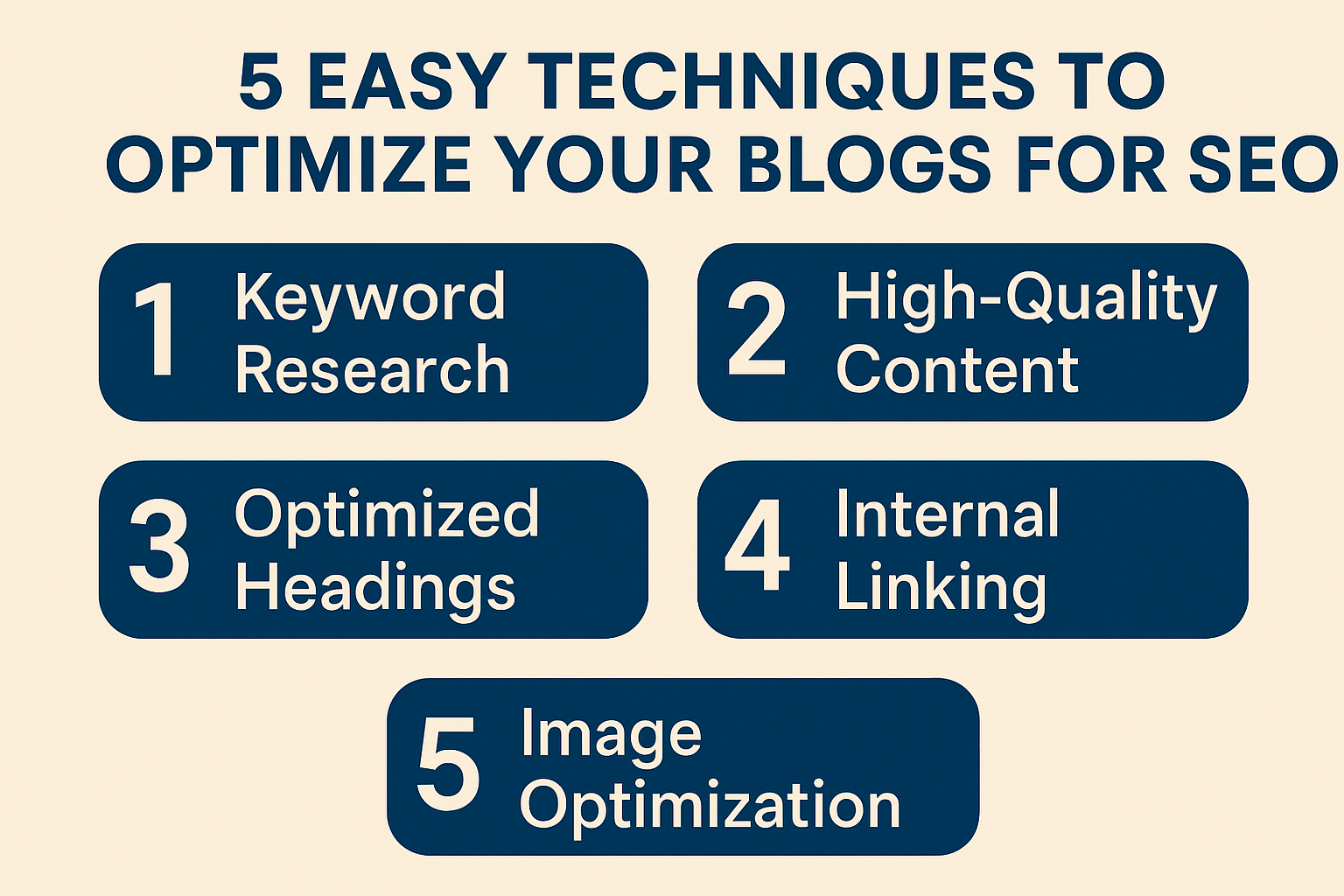Web Design & SEO for HVAC Contractors
Web Design & SEO for HVAC Contractors: How to Turn Your Site Into a Lead-Generating Machine
When your heating or cooling system breaks down, your customers don’t wait — they grab their phones and search. If your HVAC company isn’t visible in those search results or the website they land on looks outdated, you risk losing valuable leads to your competition. That’s why professional web design and local search engine optimization (SEO) aren’t optional — they’re essential.
ohspublishing.com
In this article, we’ll walk through:
-
Why HVAC contractors need professional web design
-
How SEO works specifically for HVAC businesses
-
Must-have website features for HVAC companies
-
How to choose the right partner (like OHS Publishing)
-
A roadmap to get started and track ROI
1. Why HVAC Contractors Need Professional Web Design
A website for an HVAC business should do more than list your services — it must convert visitors into customers. Firms and homeowners looking for HVAC help want reliability, speed, and trust. If your site looks outdated or burdensome to use, you’ll lose legitimacy and leads.
Here are the key design factors that matter:
Clean, Trust-Building Design
Your site should immediately convey “professional,” “dependable,” and “local.” Simple, modern design with clear messaging shows you’re serious. According to OHS Publishing’s own services, they include:
-
Clean, modern design that builds trust instantly
-
Service pages for heating, cooling, repairs, and installations
-
Highlight financing, warranty, and seasonal promotions.
Mobile-First Layouts
Most consumers searching for HVAC services are on their phones. A mobile-friendly site isn’t a nice-to-have — it’s mandatory. OHS notes, “mobile optimization is so urgent that customers can find you quickly.”
Quick & Clear Contact Options
When a customer has an emergency — like a furnace failure in winter or an AC outage in summer — they don’t want to dig. Your site should have:
-
Click-to-call buttons (especially on smartphones)
-
Service area pages so local visitors know you cover them
Service-Specific Pages
Instead of a single bland “Services” page, create dedicated pages for each primary offering: furnace repair, AC installation, preventive maintenance, warranties, and financing. This helps both SEO (by targeting specific search terms) and user experience (by assisting visitors to find exactly what they need).
Seasonal & Promotional Highlights
Showcase promotions like “Summer AC Tune-Up Special,” “Winter Furnace Emergency Service,” and “Financing Available.” These help convert visitors looking for deals and signal to search engines that your site is up to date and relevant. OHS includes these in their design services. ohspublishing.com
In short, a well-designed website establishes trust, especially in an emergency-driven purchase like HVAC service, and sets the stage for SEO to work more effectively.
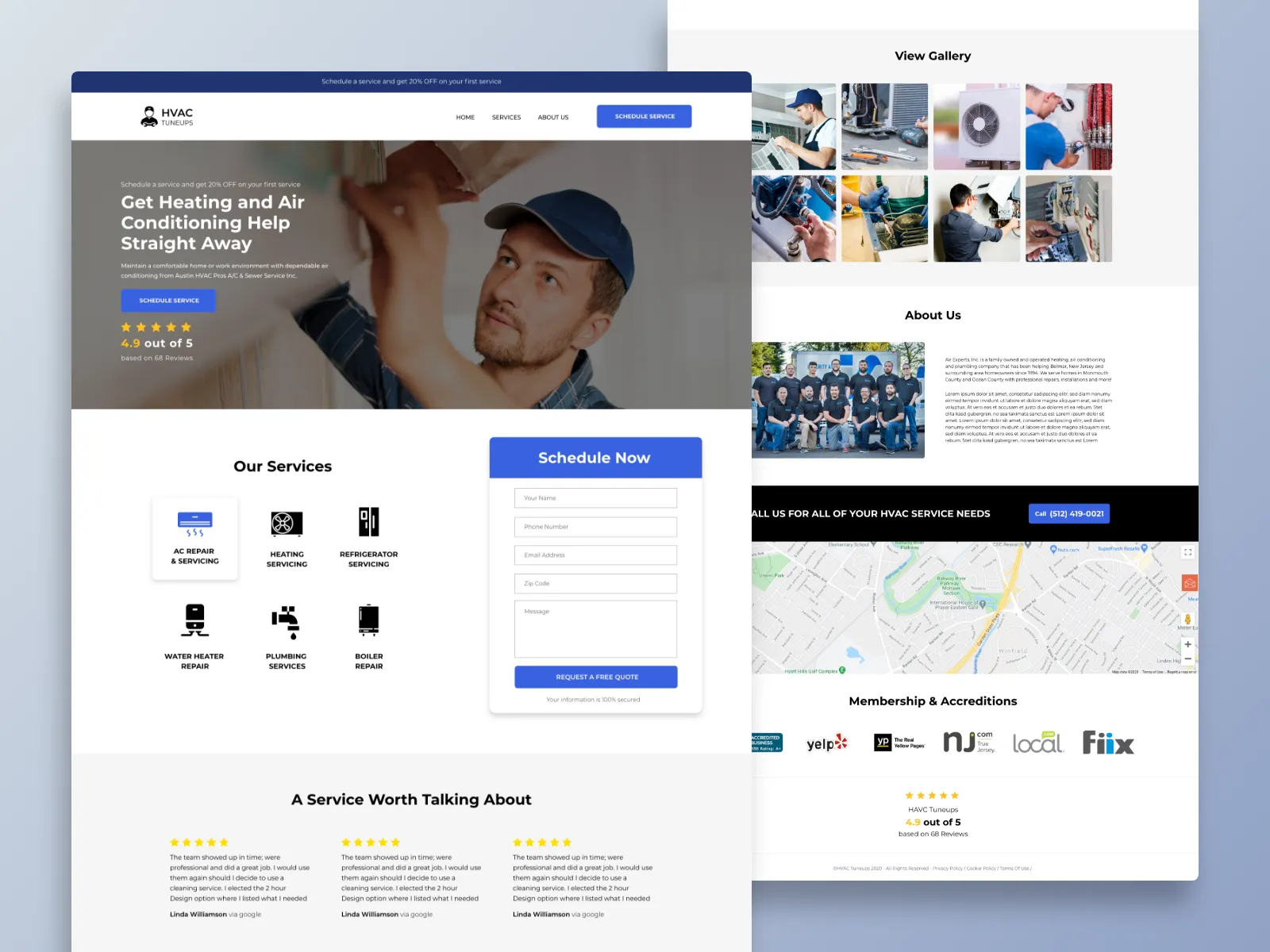
2. SEO That Helps You Book More Jobs
Design gets visitors in the door — SEO makes sure your door shows up in the first place. For HVAC businesses, local search is king: think “AC repair near me,” “furnace installation Kansas City,” “emergency HVAC contractor zip 64119,” etc. OHS emphasizes the importance of ranking for high-intent keywords like those. ohspublishing.com
Let’s break down the key SEO components for HVAC contractors:
High-Intent Keywords
You want to target searches where users are ready to act, not just browse. Examples:
-
“Furnace repair Kansas City”
-
“AC installation near me”
-
“Emergency HVAC service 24/7”
-
“Best HVAC contractor in [city]”
OHS specifically lists “optimizing for high-intent keywords like ‘furnace repair Kansas City’ or ‘AC installation near me’.” ohspublishing.com
Local SEO: Google Business Profile & Reviews
Your local footprint matters. Key tasks:
-
Claim & fully optimize your Google Business Profile (formerly Google My Business) listing. They mention “Managing Google Business Profile listings & local reviews.” ohspublishing.com
-
Encourage satisfied customers to leave reviews — high-quality, recent reviews help with local ranking and credibility.
-
Could you ensure your name, address, and phone number (NAP) are consistent across your site and directory listings?
-
Create service-area pages so Google and searchers know where you operate.
Schema Markup & Technical SEO
Schema (structured data) helps search engines understand your site and display rich results. OHS lists “Adding schema markup for services to improve search rankings.” ohspublishing.com
You should also ensure:
-
Fast page-loading times (especially on mobile)
-
Mobile-friendly/responsive design
-
Clean URLs and site architecture
-
Proper meta titles and descriptions for each page
-
Secure site (HTTPS)
-
XML sitemap + robots.txt for crawlability
Content Strategy: Educational & Seasonal Content
One of OHS’s SEO services is “Creating content around seasonal HVAC tips & FAQs.”
Detailed content accomplishes multiple goals:
-
It gives you pages to rank for more long-tail queries (e.g., “how often should I service my AC filter?”).
-
It positions you as an expert — helping with trust signals (which matter in local service sectors).
-
It allows internal linking to service pages, distributing SEO value.
-
It supports seasonal campaigns (spring AC prep, summer tune-up, fall furnace check, winter emergency service).
Lead Tracking & Conversion Optimization
SEO shouldn’t just drive traffic — it should drive booked jobs. You need to track calls, form submissions, quote requests, and conversion sources. OHS highlights “Transparent reporting to show your ROI.” ohspublishing.com
Use tools like call-tracking numbers, UTM parameters on forms, and Google Analytics to see which keywords or pages are producing actual leads and jobs.
Continuous Optimization
SEO isn’t “set it and forget it.” Move through these cycles:
-
Keyword research → set targets
-
On-page optimization & content creation
-
Local citations, reviews, and link building
-
Monitor rankings, traffic, and leads.
-
Adjust keywords, update content, and refine strategy.
In HVAC, you’ll want to monitor seasonal trends and pivot accordingly (e.g., more “AC repair” in summer, “furnace service” in winter).
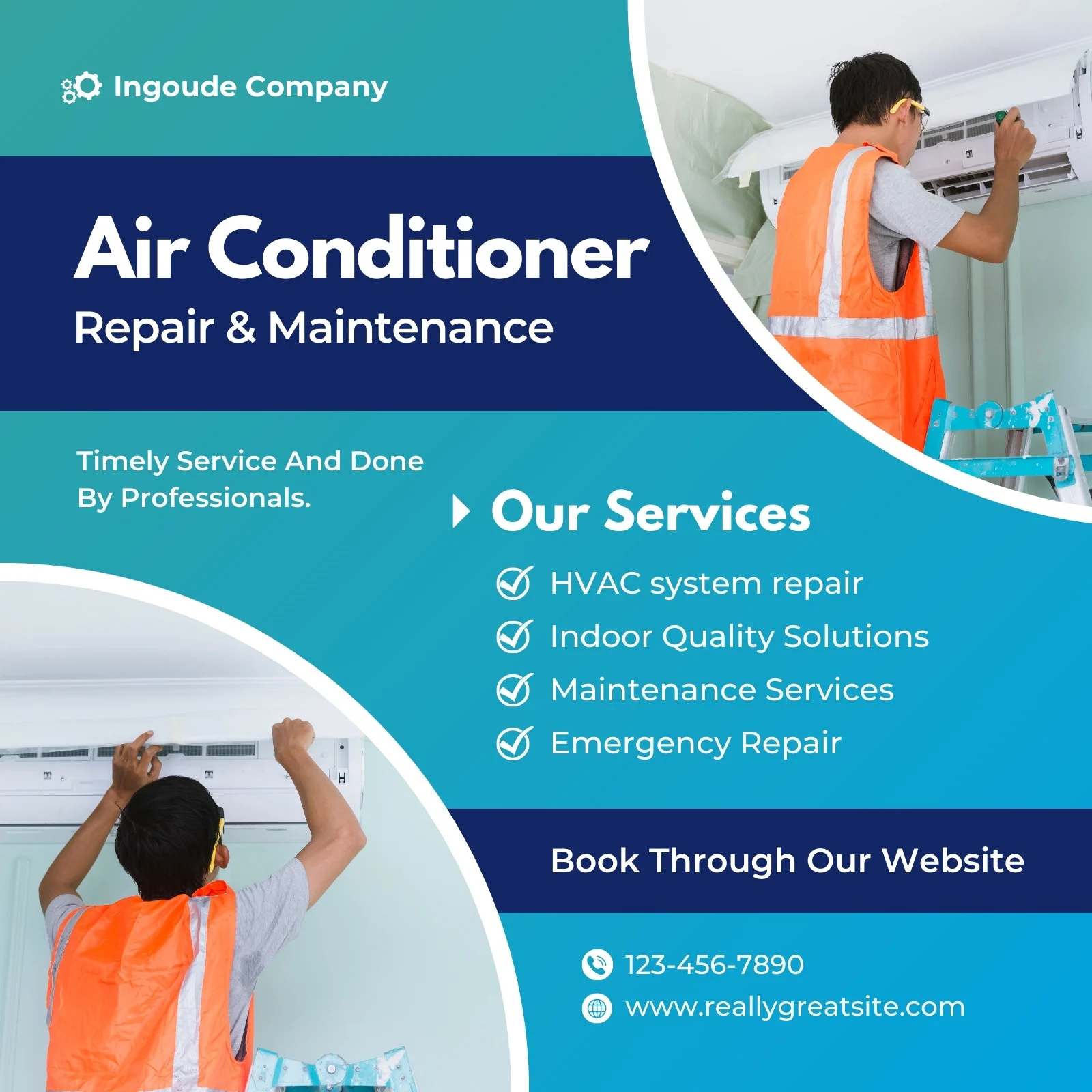
3. Must-Have Website Features for HVAC Companies
To maximize your online performance, your website must combine design, functionality, and SEO. OHS outlines specific features they build into HVAC websites. ohspublishing.com Here are the essentials and how to implement them.
Click-to-Call Buttons
Make it as easy as possible for a mobile visitor to call you directly with one tap. Place a persistent call button in your header or floating on mobile. Ensure the phone number matches your Google Business Profile and that tracking is enabled for attribution.
Online Estimate/Quote Forms
Some customers prefer submitting a request rather than calling. Include a clean, easy-to-use form that asks for minimal details (name, phone/email, service type, description). Follow up quickly. You might consider offering a “free quote” or “same-day response” to increase submissions.
Service Area Pages
Create dedicated pages for each city or region you serve (mainly if you cover multiple suburbs/zip-codes). This helps you rank for “AC repair [City]” keywords. Example: “Furnace repair Kansas City,” or “AC installation Overland Park.” Ensure each page includes unique content specific to that area (avoid simply duplicating pages). OHS mentions “Service Area Pages — Rank higher for searches in your service locations.” ohspublishing.com
Maintenance Plans & Specials
Highlight recurring revenue offerings (e.g., annual check-ups, filter exchanges, maintenance contracts) and specials or seasonal campaigns. These not only help drive conversions but also give you new content for blog posts and promotions.
Educational Blog Content
Posting regular blog posts or articles on topics such as “Why your AC blows warm air,” “How often should you clean your HVAC ductwork,” “Winterizing your furnace” helps with SEO and positions you as an expert. OHS lists “Educational Blog Content — Build authority and boost search visibility.” ohspublishing.com
Even better: include local signals (“Kansas City homeowners”, etc.), internal links, and calls to action (CTAs) within your posts.
Straightforward Service Navigation & Offers
Your menu should let visitors immediately find primary services (e.g., AC repair, furnace replacement, emergency service). Use visuals/icons and highlight urgency (“24-hour service”, “Same-day appointment”). Also, prominently feature financing or warranty offers.
Responsive, Mobile-Optimized Design
We already touched on this in section 1 — but it bears repeating. Use responsive layouts, ensure call-to-action buttons are easy to tap, remove any pop-ups that block user flow, and check site speed, especially on mobile. Google cares about mobile-first indexing.
Strong Visuals and Trust Signals
-
High-quality imagery of your technicians, vans, and equipment.
-
Logos of brands you service (e.g., Trane, Carrier).
-
Badges/certifications (NATE certified, BBB, etc).
-
Customer testimonials and reviews are prominently featured.
These build trust, which matters heavily in service industries where customers open their homes.
Analytics & Conversion Tracking
Install tools like Google Analytics 4, set up conversion events (form submissions, phone clicks), integrate a call-tracking system, and review performance regularly. Your website isn’t just a brochure—it’s your lead-generation engine.
4. Why Choose OHS Publishing for HVAC Web Design & SEO
If you’re going to invest in a pro web design & SEO partner, you want one that understands HVAC contractors and local services. OHS Publishing claims:
-
Custom websites designed for HVAC contractors
-
SEO strategies that bring in steady, qualified leads
-
Transparent reporting to show your ROI
-
Fast turnaround and ongoing support
Key differentiators when you evaluate partners:
-
Do they have experience in the HVAC or home services sectors? (Local competition, seasonal flows, emergency calls)
-
Do they understand local search and service-area optimization?
-
Can they showcase the contractor clients and real lead outcomes?
-
Are they focused on conversion optimization (not just ranking)?
-
What level of ongoing support and reporting do they provide?
-
How transparent is the pricing and deliverables?
Choosing a partner like OHS Publishing (or another credible agency) helps you avoid common mistakes (generic template sites, neglected SEO, low-conversion layout) and fast-track your lead-generation engine.
5. Roadmap: How to Get Started & Track ROI
Here’s a step-by-step plan to get your HVAC website and SEO strategy up and running — and to ensure you’re tracking return on investment (ROI).
Step 1: Audit Your Current Website (If You Have One)
-
Is your site mobile-friendly? (Use Google’s Mobile-Friendly Test)
-
How fast does it load? (Use PageSpeed Insights)
-
Does your homepage clearly show you’re an HVAC contractor, your service area, and how to contact you?
-
Are your phone number and contact forms visible and easy to use?
-
Does the site include service-specific pages (e.g., AC repair, furnace installation)?
-
Is your content original and optimized for HVAC-specific keywords?
-
Would you happen to know if your Google Business Profile and other local listings are claiming and correct?
If any of these are weak, you’re leaving leads on the table.
Step 2: Keyword & Competitor Research
-
Identify 10-20 high-intent keywords for your area. Example: “[City] AC repair”, “furnace replacement [City]”, “emergency HVAC service [zip]”.
-
Could you check what your competitors are ranking for and what their websites look like?
-
Use tools (e.g., Ahrefs, SEMrush, Google Keyword Planner) to find search volume and competition.
-
Map keywords to pages: one main keyword per service page + long-tail keywords for blog posts.
Step 3: Redesign or Build Website with Conversion in Mind
If redesigning or building:
-
Choose a modern, clean template/structure that you can customize (or work with an agency).
-
Could you make sure mobile responsiveness and fast load times?
-
Include prominent call-to-action (CTA) buttons like “Call Now”, “Free Quote”.
-
Create dedicated service pages (AC repair, heating installation, maintenance plans).
-
Could you add a blog section to support the content strategy?
-
Add trust signals: images of your team, certifications, and testimonials.
-
Please make sure you have analytics and conversion tracking from day one.
Step 4: On-Page SEO & Technical Setup
-
Set meta titles and meta descriptions that include target keywords and your locality.
-
Use header tags (H1, H2) properly. Example: H1 might be “Kansas City AC Repair & Furnace Replacement”, H2 “Why Choose Us”, etc.
-
Add schema markup (Service schema and Organization schema) to help search engines better understand your business. (OHS mentions adding schema markup for services.)
-
Optimize images (alt text, compression).
-
Please make sure internal linking: your blog posts link to the service pages, service pages link to each other.
-
Please set up an XML sitemap and submit it to Google Search Console.
-
Please make sure you have an SSL certificate and your site uses HTTPS.
-
Configure mobile-first indexing and test site performance.
Step 5: Local SEO & Citations
-
Claim and optimize your Google Business Profile (accurate name, category: HVAC Contractor, address, hours, photos).
-
Please make sure your NAP (name/address/phone) is consistent across your website and directories.
-
Add local citations (Yelp, Angi, HomeAdvisor, BBB, etc.).
-
Encourage satisfied customers to leave reviews on Google (and other niche HVAC directories).
-
Optimize your site’s footer or location page with your service area cities (use a “Service Areas” page or block).
-
Create local landing pages (for each central service area) if you serve more than one city/region. OHS emphasizes “Service Area Pages — Rank higher for searches in your service locations.” ohspublishing.com
Step 6: Content Strategy & Blogging
-
Create a calendar of blog topics tied to HVAC seasonality (spring AC prep, summer AC failure, fall heating check, winter emergency service).
-
Write educational posts like “Top 5 Reasons your AC Won’t Turn On”, “How Often Should You Replace Your HVAC Filter?”, “Signs You Need a New Furnace”, “Emergency HVAC Repairs: What to Do While You Wait”. OHS mentions creating content around seasonal HVAC tips & FAQs. ohspublishing.com
-
Within each blog post: include internal links to your service pages, local keywords (city, region), CTA for free quote or call now.
-
Consider publishing case studies or testimonials (“How we replaced a furnace in Kansas City in one day”), which build authority and trust.
-
You can promote your blog posts on social media, email newsletter, and local citation sites to boost reach and build backlinks.
Step 7: Link Building & Authority
-
Reach out to local business associations, HVAC associations, and property management companies and get featured on their websites (these create local, relevant backlinks).
-
You can submit guest posts to relevant local blogs or home-services publications, with a link back to your site.
-
Sponsor local events (e.g., a home-show booth) and get listed on their site.
-
You can monitor your backlink profile to maintain high quality (avoid spammy links).
The more quality, relevant links you have, the stronger your local SEO will perform.
Step 8: Track Results & Iterate
-
Set up monthly dashboards tracking: organic traffic, keyword rankings, form submissions, calls from website, booked jobs, revenue from leads attributable to the site.
-
Compare results to the cost of your website/SEO program to compute ROI (leads × conversion rate × average job value).
-
Use A/B testing where possible (e.g., test different CTA wording or placement).
-
Please review which service pages perform best and which keywords drive leads, and refine the content accordingly.
-
Keep content fresh: update blog posts annually and refresh service pages when you add new offerings or your market changes.
6. Frequently Asked Questions (FAQs) for HVAC Contractors
Q: How long does it take for SEO to work?
A: SEO is a medium-to-long-term strategy. You may begin seeing traction in 3-6 months, but significant local dominance may take 6-12 months, depending on competition, budget, and consistency.
Q: Do I really need a brand-new website?
A: Not necessarily. If your current site is mobile-friendly, fast, has clear contact/CTA visibility, and decent content, you can optimize it. But if it’s outdated, slow, or not aligned with HVAC service conversion, a redesign may be the better investment.
Q: Is blogging worth it for an HVAC company?
A: Yes — educational blogs build trust, help capture long-tail search terms, and reinforce your expertise. In local service markets, being seen as the “go-to” expert matters. As OHS notes, blog content “Build[s] authority and boost[s] search visibility.” ohspublishing.com
Q: Should I focus more on Google Ads (PPC) or SEO?
A: Both can be valuable. PPC drives immediate traffic, but costs per lead can be high. SEO builds sustainable, organic traffic over time. Many HVAC businesses use a hybrid approach: run a PPC campaign while building SEO and converting organic leads for long-term sustainability.
Q: How do I measure whether my website is working?
A: Key metrics include:
-
Number of phone calls/click-to-calls from the website
-
Number of form submissions/quotes requested
-
Conversion rate (leads → booked jobs)
-
Average job value
-
Organic search traffic growth
-
Keyword ranking improvements
-
Cost per lead (via SEO/web investment)
If you track these consistently, you can evaluate whether your site & SEO are delivering ROI.
7. Final Word: Heating Your Leads & Cooling Off Your Competition
Don’t let an outdated website or weak search presence cost you jobs. With professional HVAC web design and local SEO, your company can attract more customers and sustain year-round growth. As OHS Publishing puts it:
“Don’t let an outdated website or weak search presence cost you jobs. With professional HVAC web design and local SEO, your company can attract more customers and sustain business growth year-round.”
Here’s your quick checklist:
-
Modern, mobile-optimized website that clearly highlights your services and contact options.
-
Targeted service pages, service-area pages, and blog section.
-
Local SEO strategy: high-intent keywords, Google Business Profile, reviews, citations.
-
Technical SEO: schema markup, fast site speed, responsive design, secure site.
-
Content strategy: educational blogs, seasonal tips, case studies.
-
Analytics & conversion tracking to measure leads and ROI.
-
Ongoing optimization and iterative improvements.
If you’re ready to take it to the next level, consider working with a partner experienced in HVAC web design and SEO — one that understands your local market, your seasonality, and how to generate qualified leads, not just traffic.
Feel free to let me know if you’d like:
-
A blog calendar of 12 HVAC-specific content ideas for your website
-
Ad copy or social-media posts (Facebook, Instagram, LinkedIn) aligned with your new site + SEO campaign.
Let’s get your HVAC business ranking, booked, and thriving.


